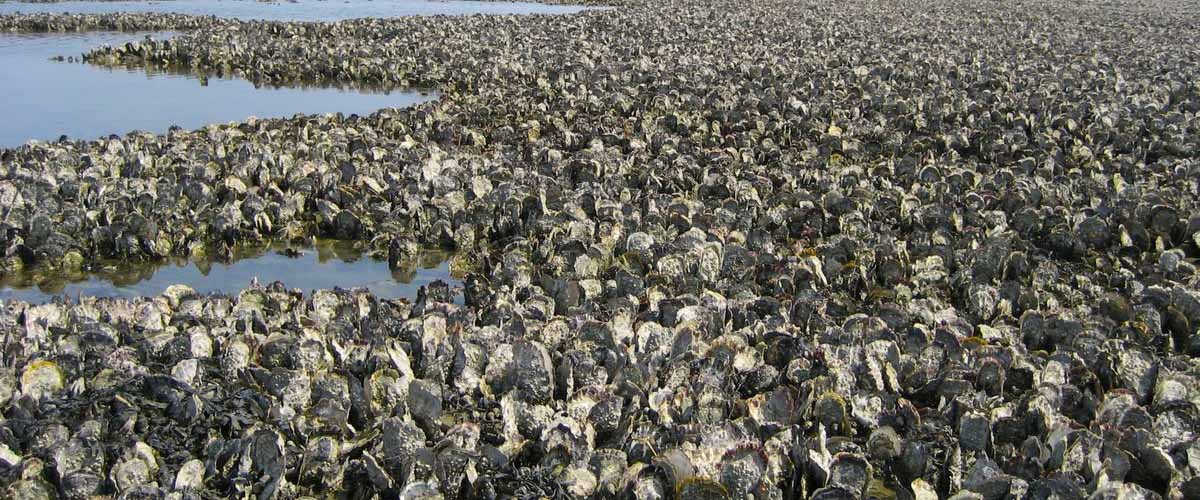Oyster reefs provide a host of ecosystem services to coastal communities ranging from water filtration and shoreline stabilization to serving as a nursery habitat for commercially valuable fish and invertebrates. Oyster populations have been drastically reduced in the last 100 years, and therefore studying the myriad of environmental and biological processes that influence oyster distribution and abundance has become increasingly important. With this goal in mind, a team of scientists including MSC faculty members Jon Grabowski, Randall Hughes and David Kimbro, have investigated how coupled physical-biological processes influence the distribution of the eastern oyster (Crassostrea virginica) along the southeastern coast of the United States.
In their article, published in the journal Limnology and Oceanography, the research team reports data collected over a year of sampling, during which they simultaneously quantified physical factors such as temperature, salinity and water depth, as well as biological parameters such as oyster recruitment, density and biomass at multiple tides spanning 100km of shoreline. The authors found water depth was the only physical variable that corresponded with biological responses of oysters, and that oyster biomass was highest in areas of greater tidal energy, caused by deeper water and longer duration of tidal inundation. The results of this study emphasize the important role of physical processes in the health and functioning of eastern oyster populations, and provide essential information to aid in the management and restoration of this economically and environmentally valuable species.

